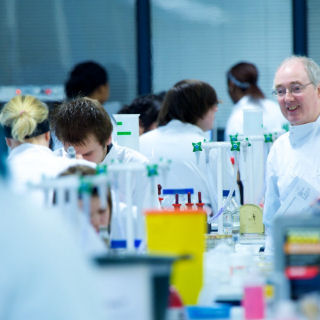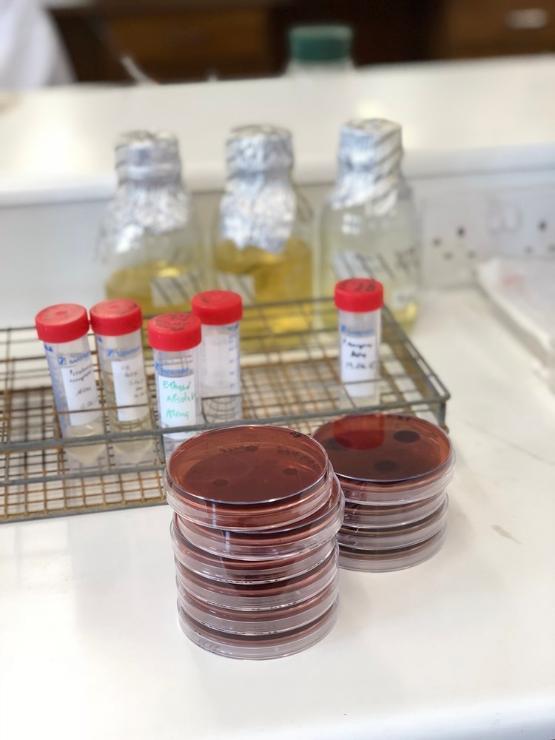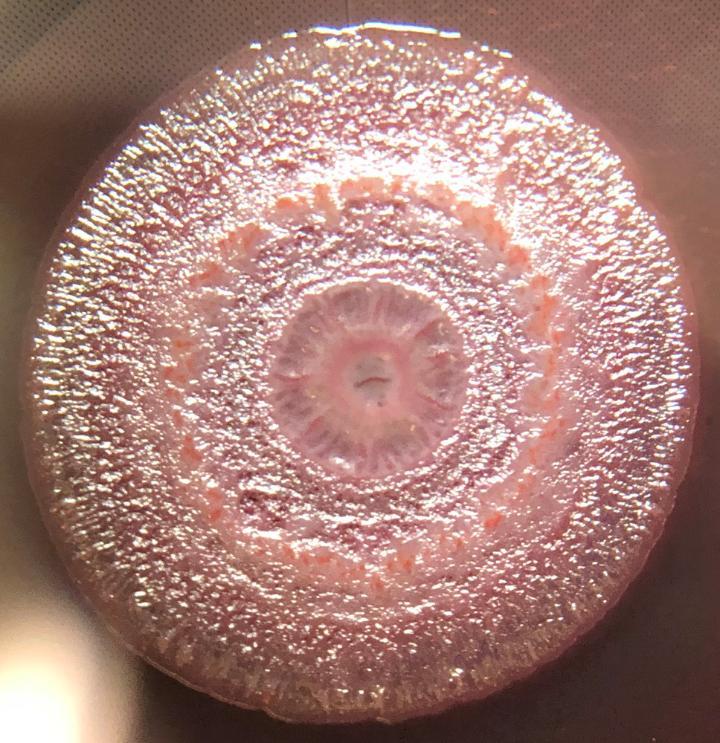
Microbiology and Biotechnology
Infectious diseases research
Microbiology research at the University of Bradford is focussed on understanding how certain bacterial pathogens can cause disease, and investigating the way in which colonisation of people and medically important inert surfaces can be reduced.
Our team in Bradford come from a range of interdisciplinary backgrounds, with plenty of experience both of academic study and hands on expertise in clinical hospitals. Our research provides insight into a broad fauna of bacterial species both infectious and passive. We are keen to better understand and treat a range of complex infectious organisms.
We are also working on biological sensors and other biotechnological devices to treat, combat the spread of, or faster diagnose all manner of infections.

Standard microbiological lab bench
Gastrointestinal infections
Gastro-intestinal infection, usually manifested as diarrhoea and/or vomiting, remains a major cause of global death, with up to 1 million people per year succumbing to the disease, the majority being young children in developing countries.
We have studied many different infective species that cause can gastro-intestinal disease, such as Escherichia coli - an almost ubiquitous member of the microflora of the healthy GI tract. E. coli has a number of strains and variants which have evolved to be pathogenic to humans. Enteropathogenic E. coli (EPEC). EPEC usually only cause disease in very young children, but it can be very severe and is often fatal. The bacteria adhere to the surface of the small intestine and causes changes to the structure and function of the cells lining the gut. This process is quite complicated, and involves multiple genes, our aim is to understand the roles of some of the identified but uncharacterised genes and proteins.
Another variant, Enteroaggregative E. coli (EAEC), causes milder, but more long lasting diarrhoea in children, but is also a significant cause of ‘Traveller’s Diarrhoea in adults.EAEC are a very heterogeneous group, and this leads to problems with their laboratory diagnosis. Whilst many tests are available, the only one which is absolutely reliable is a an adhesion assay using human cells grown in the lab, to which EAEC stick in a characteristic ‘stacked brick’ pattern. Our aim is to develop a cheaper, more convenient diagnostic test, with very good reliability.

Bacterial culture on an agar plate
Bacterial biofilm: the slimy city of bacteria
Biofilms are ubiquitous bacterial behaviours - when they collect bacteria forms large, organised structures. Within this biofilm bacteria are protected from external damages and attacks such as the immune systems or antibiotics. We are interested in investigating the key molecular mechanisms and gene regulatory networks for biofilm formation in response to the attachment on different material surfaces, and to find surfaces / methods of prevent them from forming.

Photograph of Pseudomonas aeruginosa forming a biofilm
Bacteria 'speaking' to each other
Quorum sensing (QS) is coined to describe bacterial cell-cell communication by small signalling molecules. Through QS, bacterial population can coordinate their population behaviours including biofilm formation, virulence production and antibiotics resistance. Our work focuses on understanding molecule mechanisms of bacterial communication and QS-regulated networks for virulence expression and will facilitate the development of novel therapeutic approaches against bacterial infections.

Scanning electron microscope of bacteria on a patterned surface designed to prevent them sticking to it
